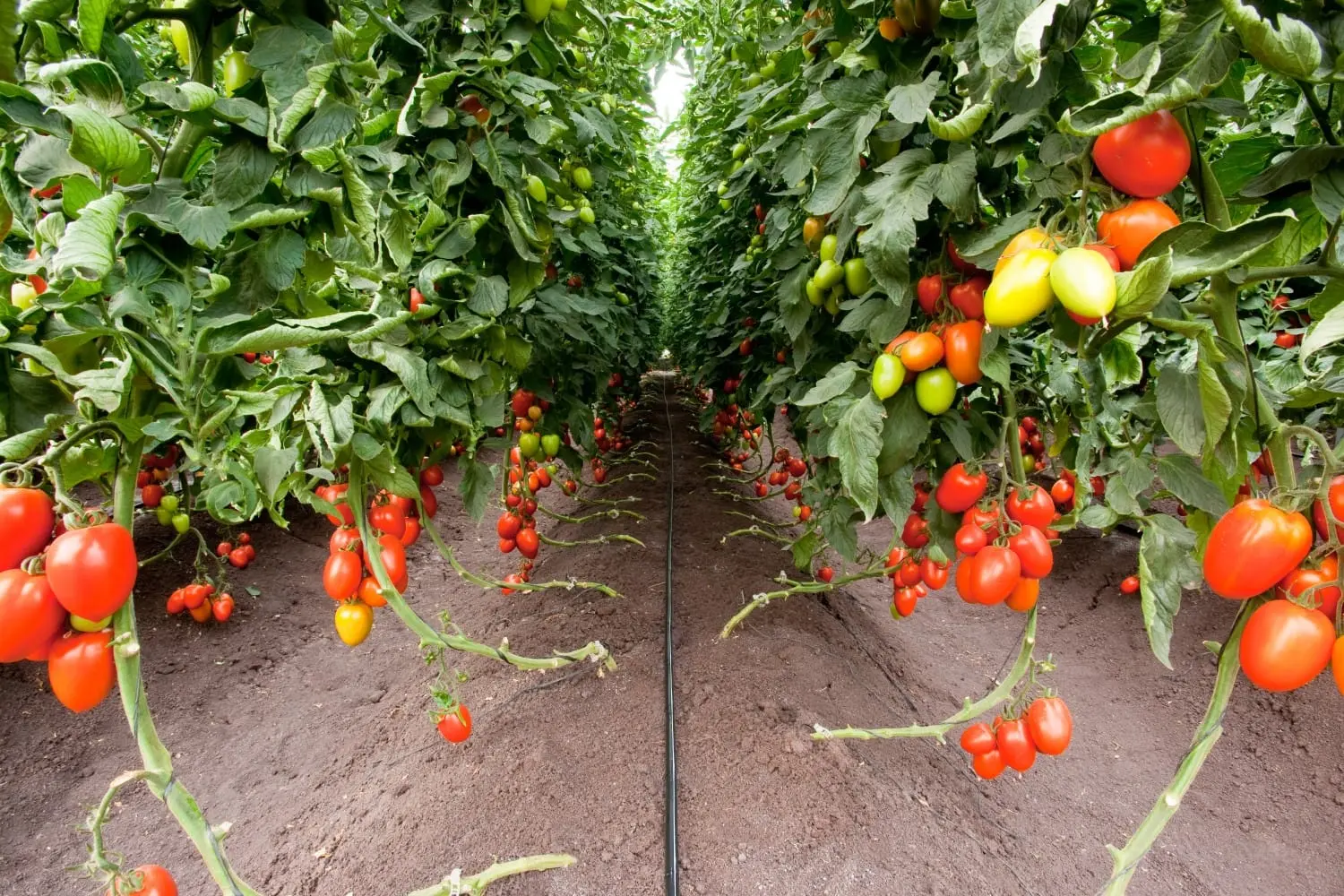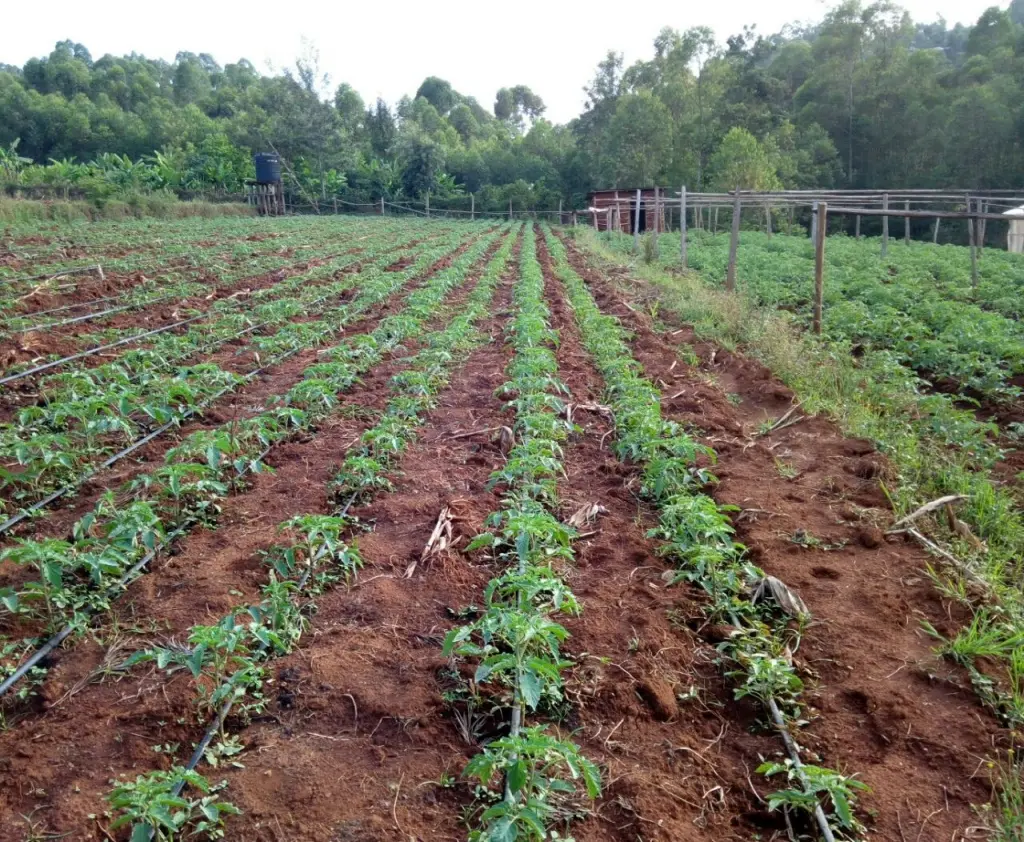TOMATO IRRIGATION FARMING

In Kenya, drip irrigation is the most efficient method for irrigating tomatoes, ensuring water is delivered directly to the roots, minimizing water waste and disease risk. Consistent and timely irrigation is crucial, especially during flowering and fruit development, to maximize yields and fruit quality.
Key Aspects of Tomato Irrigation in Kenya:
· Drip Irrigation:

· This method delivers water directly to the plant's root zone, reducing water loss through evaporation and preventing fungal diseases that can arise from wet foliage.
· Watering Frequency:
· Tomatoes generally need 1-2 inches of water at least 3 times per week. In hotter seasons, daily irrigation for 20-30 minutes might be necessary, while cooler seasons may require watering every 2-3 days.
· Timing:
· Watering in the morning or late evening minimizes evaporation and water loss. Avoid watering at night, as it can create a damp environment conducive to root diseases.
· Monitoring Soil Moisture:
· Regularly check the soil's moisture level to determine if irrigation needs to be increased or decreased.
· Critical Growth Stages:

· Pay close attention to irrigation during flowering, fruit set, and fruit sizing, as these are crucial for maximizing yield and preventing issues like blossom-end rot.
· Components of a Drip Irrigation System:
· Key components include a water source, pump, filtration system, mainline, sub-mainlines, drip tubing, and emitters.
· Cost Analysis:
· Drip irrigation systems can range from KES 20,000 to KES 100,000 for a 1-acre setup, depending on the quality of materials.
· Benefits of Proper Irrigation:
· Consistent irrigation ensures healthy growth, prevents stunted growth, reduces susceptibility to diseases, and promotes high fruit production.
Additional Tips for Tomato Farmers:
Soil Preparation: Ensure the soil is well-drained and rich in organic matter.
Sunlight: Tomatoes need at least 6-8 hours of direct sunlight per day.
Spacing: Proper spacing between plants allows for adequate air circulation and sunlight penetration.
Fertilizing: Regularly fertilize tomatoes with a balanced fertilizer, especially during flowering and fruiting.
Pest and Disease Management: Implement pest and disease control measures as needed, including proper pruning and sanitation.